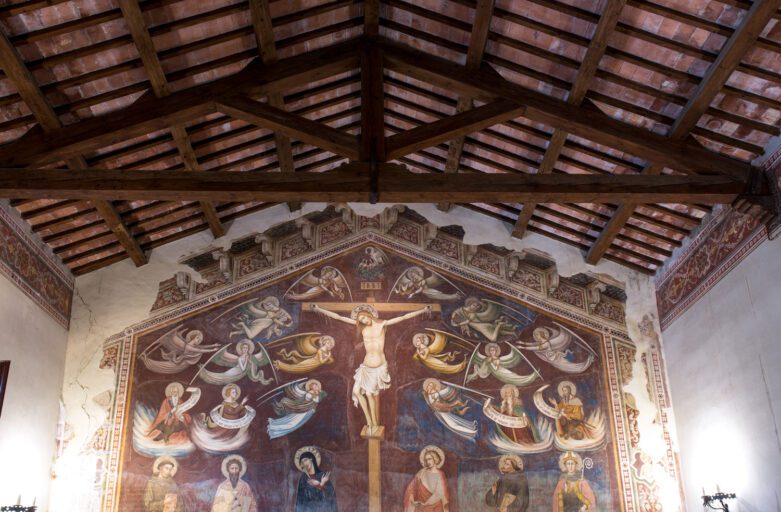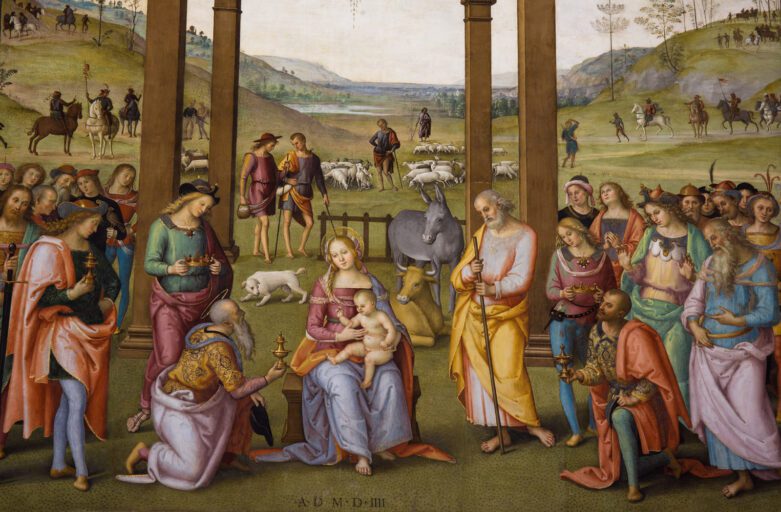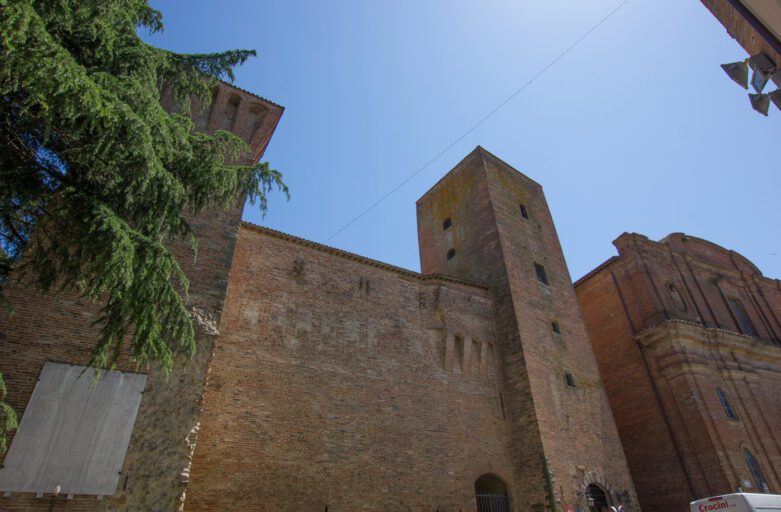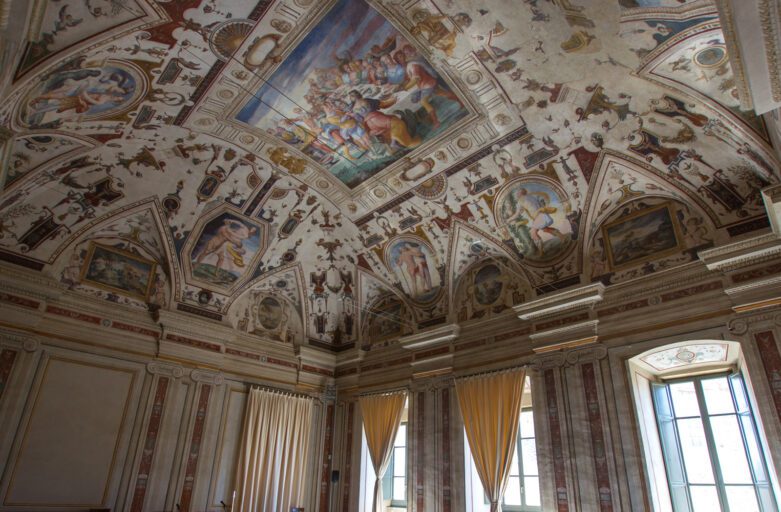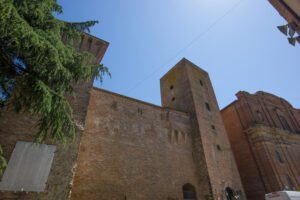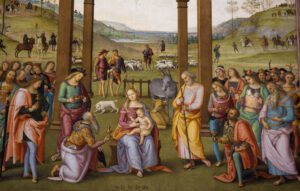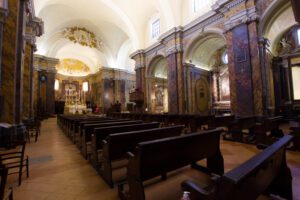The Church of Saint Francis
Near the imposing Fortress in Città della Pieve a Church of Saint Francis exists, now also renamed Shrine of Our Lady of Fatima.
The Church of Saint Francis was built precisely by the Franciscans, just outside the town gate called Porta Perugina, in approximately the second half of the 13th century. It was then renewed, especially in its interior, in the late 18th century.
The Façade
The Church of Saint Francis was built precisely by the Franciscans, just outside the town gate called Porta Perugina, in approximately the second half of the 13th century. It was then renewed, especially in its interior, in the late 18th century.
The inferior part of its façade is what remains of the original building, with three high arches and the gate in the middle. The capitals of the pillars, decorated with leaves, provide the bases for the elegant lintels of the arches, which in their turn are embellished with a chessboard motif and elongated ovals. The whole façade was built in bricks, in line with the specific architectural style used in Città della Pieve. Its three-arched structure recalls the Church of Saint Francis in Chiusi, Tuscany, and the more famous Orvieto Cathedral, where wide round arches frame strongly splayed gates.
The Interiors
The interior was restored probably on the basis of a project by architect Andrea Vici (1743-1817). Here a wooden panel is set, painted in the 16th century by a follower of Perugino, Domenico di Paride Alfani. It shows Virgin Mary enthroned, surrounded by Franciscan Saints. The pyramid-like composition recalls Raphael, but hints at the new art wave from Florence – such as Andrea Del Sarto and Fra Bartolomeo – can also be detected.
On the left altar, a painting representing The Descent of the Holy Spirit, dated 1606, is the work of Antonio Circignani, a.k.a. Pomarancio, of whom many other paintings can be seen in Città della Pieve. For a starter, he was the author of the wall painting above the sacristy door in this very church, an Ecce Homo (“Behold the man,” John 19.5). The fresco, intense and tragic, by highlighting Jesus Christ's tortured and humiliated body obviously pays tribute to Caravaggio.
Oratory of Saint Bartholomew
Next to the Church of Saint Francis is the Oratory (small church) of Saint Bartholomew. Here Masses were first celebrated by Benedictine monks; the building was then acquired by Conventual Franciscans, who would rather use it as refectory (dining hall) and Chapter Hall (for the community meetings).
In 1426, Saint Bernardine of Siena chose it as seat to the Confraternita della Misericordia, the Brotherhood of (Divine) Mercy. The Tuscan Saint had been strongly bound to Umbria from the very beginning of his preaching activity, that aimed at a renewal in Franciscan life. Some buildings in Perugia are still nowadays a sign of the great devotion of Umbrian people toward Saint Bernardine – on the side façade of the Perugia Cathedral a Renaissance pulpit named after him exists. More renowned in the same town is the Oratory of Saint Bernardine, next to the charming architectural complex of San Francesco al Prato (Saint Francis' Church by a Lawn).
In Città della Pieve, the Oratory of Saint Bernardine is famous especially for a fresco on the far wall in the refectory. It is about a Crucifixion painted by an artist from Siena, Jacopo di Mino del Pellicciaio, dating back to the second half of the 14th century. It is also known as Il Pianto degli Angeli, “The Crying of Angels,” because of their deeply afflicted expressions. The painter clearly belongs to the 14th century artistic milieu of Siena, in a lyrical interpretation of reality that was a spiritual trademark in the Gothic works by Simone Martini and Ambrogio Lorenzetti.
INFO
Location
Largo della Vittoria, 6, 06062 Città della Pieve PG
Contacts
info@secretumbria.it
